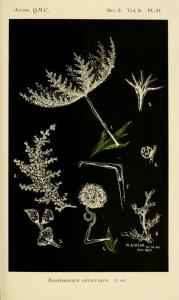Well, Science Gossip is a self-determined toddler at 2 years old today. It feels like it was only yesterday that sciencegossip.org was launched onto the wide citizen science world! But looking back, we can see that in the last twenty-four months, we have done a whole lot.
You all – the wonderful volunteers on the Web – have done a really amazing job – completing 16 Victorian natural history periodicals, which accounts for over 150,000 completed pages with 540,000+ classifications. Had I attempted to discover and classify illustrations as a lone historian, I wouldn’t have even got through a tenth of these pages.

The periodicals you have all been classifying represent some of the most important sites for nineteenth century natural history. My task in the following year is to start writing a book-length account of how the illustrations, illustrators and species classifications that you have discovered can help to tell a story about the importance of images to practices and processes of observing and communicating knowledge about the natural world. As I write this account, I plan on bringing questions that arise out of the data back to the experts on ‘talk’ – so stay tuned on talk.sciencegossip.org if you are interested in participating in these discussions.
What’s Next?
The current batch of periodicals that we have up should keep us going for a bit longer. Of the six journals left to classify, four are over 65% finished, and the remaining two are hovering at around 10% complete. Our two geology periodicals are very close to finishing, with only 10% left to go – so with a little group effort we should be able to get two more complete very soon.
What happens after we finish all of the current periodicals is up to you. We have already started a discussion on Talk about what the next tranche of periodicals could be. Join that discussion here!

The Biodiversity Heritage Library – which has been the source for all the images and periodicals we have been classifying over the last two years – still has thousands of unclassified books and journals which are full of interesting, but currently hidden, images. The research decision on which sources we – as a community – should work on next is in your hands. This is the essence of citizen science.
With all the knowledge and expertise you have developed over the last two years identifying and classifying images – it only makes sense that the direction of the research becomes community-, rather than individually, driven.
I can’t wait to see what we’ll all do next!



